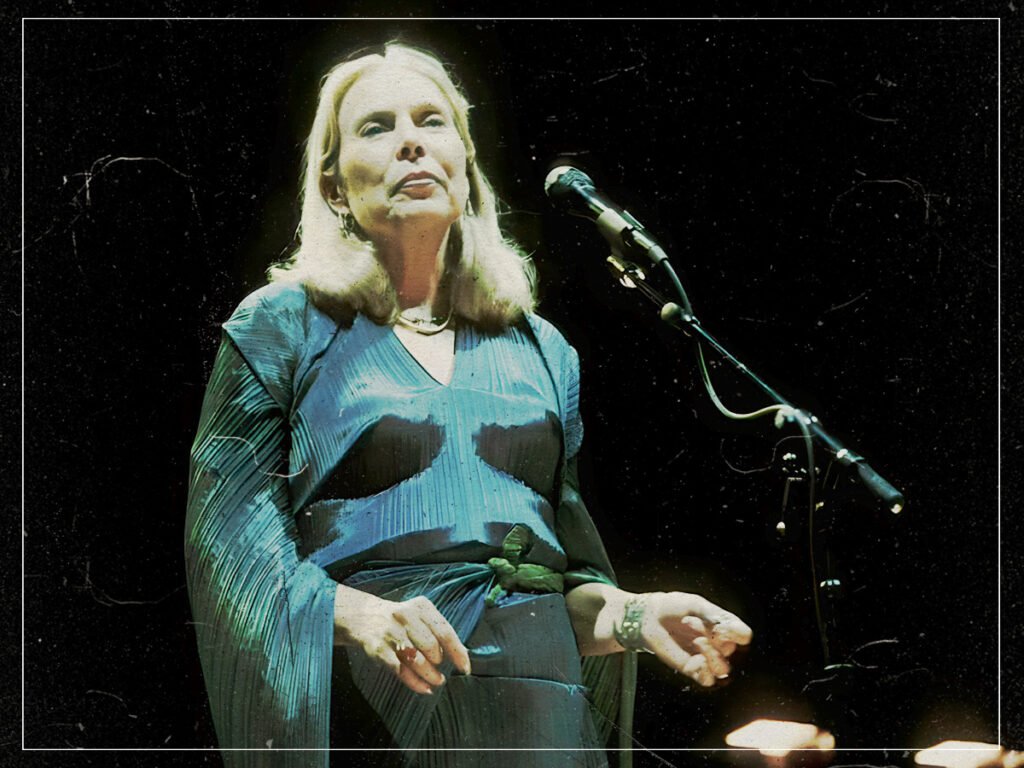
(Credits: Far Out / Alamy)
No songwriter can stay stagnant in one sound forever. It’s one thing to make a handful of hits and ride that wave for as far as it takes you, but it can also be more than a little bit homogenous if you know that you’re going into the studio to write a breakup song or trying to crack the code on how to write a pop hit. And while Joni Mitchell has flirted with the pop charts throughout her career, nothing she ever wrote could ever be considered traditional.
Sure, she had the same kind of presentation that most singer-songwriters were familiar with, but as soon as she opened her mouth to sing and started playing guitar, there was a completely different artist at work. Mitchell had already begun to discover alternate tunings when sculpting her first classics, and no matter how many fingerpicking exercises James Taylor and Paul Simon went through, it didn’t matter when Mitchell could make a guitar resonate like she could.
But beyond being a fantastic guitarist, Mitchell was always willing to put out lyrics that most people would have been too scared to release themselves. Even Kris Kristofferson remembered feeling uncomfortable when listening to Blue because of how personal it was, but as far as Mitchell was concerned, why wouldn’t an artist be willing to bear their emotions in the studio instead of keeping it all inside?
As she went on, though, the silly love songs side of her sound slowly began to fade away. There were already songs of raw heartache all across Blue, but hearing her on albums like Court and Spark or The Hissing of Summer Lawns, she was embracing her poetry in the same way that artists like Leonard Cohen was, only this time she was leaving her contemporaries in the dust by having the musical chops and the lyrical depth to pull it off.
Mitchell had already been in a state of change ever since her early days, though, and that came from her listening to Bob Dylan when she started putting her first songs together. Anyone could make a bunch of happy tunes, but Dylan was the first to remind everyone that songs could be used as emotional vehicles, and when Mitchell heard some of his first tracks, she knew that was a much broader playing field to work with.
From there, Mitchell claimed that Dylan helped her restructure her thoughts about writing songs, saying, “The emphasis on lyrics, I think, began with Dylan. That’s where I picked up the gauntlet. I always wrote poetry, but I never liked poetry! I only wrote it when I was emotionally disturbed. There were things that would make me go home and write. But I never based my identity in that. Besides, I liked to dance! So, for a dancer, the lyrics didn’t really matter. ‘Tutti Frutti’ was fine by me.”
When she started telling her own stories, though, she became far more interesting as a writer. She had already had a miserable time working with her first husband on music, but compared to the cheesy songs that she was forced to work on, a track like ‘The Circle Game’ had all of the imagery and musical chops that would come to define her work going forward as well.
Although Mitchell’s relationship with Dylan has been touch and go ever since, it’s always important to never forget the people who helped you realise your own potential. Dylan may not have spoken for Mitchell specifically when he wrote tunes like ‘Blowin’ In The Wind’, but if he could score a hit out of a song all about the greater problems with the world, what was stopping her from doing the same?
Related Topics
The Far Out Music Newsletter
All the latest music news from the independant voice of culture.
Straight to your inbox.

